Young adults 17-25
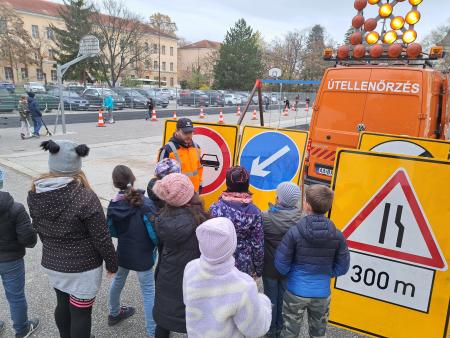
Sunday, June 16, 2024
From the first of September 2022, MKIF Magyar Koncessziós Infrastruktursa Fejlsztó Zrt took over the operation, maintenance and development of 1,237 km of existing Hungarian expressways.
When analyzing the accidents recorded by our traffic surveillance cameras on domestic expressways, we noticed that it is important to draw attention to traffic safety in our communication (keeping a following distance, observing the speed limit near work areas, protecting our colleagues, early education of children/young adults in safe traffic) and traffic -culture (littering, driving in an egoistic style that endangers others, early education of children/young adults on responsible driving).
When analyzing the accidents recorded by our traffic surveillance cameras on domestic expressways, we noticed that it is important to draw attention to traffic safety in our communication (keeping a following distance, observing the speed limit near work areas, protecting our colleagues, early education of children/young adults in safe traffic) and traffic -culture (littering, driving in an egoistic style that endangers others, early education of children/young adults on responsible driving).

Sunday, June 16, 2024
We are addressing road safety for motorcyclists safety and innovative, pragmatic infrastructure solutions, that are working and can be applied on the roads, mainly for pro-active approach, and as well as active (passive safe).
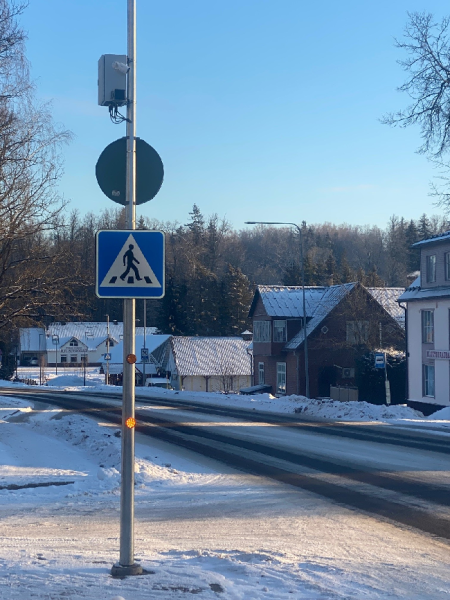
Saturday, June 15, 2024
The main road safety challenge that was tackled in this initiative is safety of the pedestrians and drivers on the main street of Põlva. The daily traffic volume on this road segment is high, with approximately 5000 vehicles, including trucks, passing through it every day. Simultaneously, high number of pedestrians use the same road daily to get to work or school. From a traffic safety perspective, this road segment is challenging – the hilly and winding road can distract drivers from speed limits, and the increased prevalence of light vehicles (bicycles, scooters etc) further amplifies the danger of this situation.
Smart Road is a vision of the future street, where all road users are equally preferred, and the emphasis is no longer solely on cars. Smart Road is designed to encourage drivers to objectively consider their traffic behaviour and to pay more attention to vulnerable road users. At the same time, the creators of Smart Road understand that vulnerable road users are indeed more difficult to notice, and effective solutions must be provided to assist drivers in focusing their attention on them.
Smart Road is a vision of the future street, where all road users are equally preferred, and the emphasis is no longer solely on cars. Smart Road is designed to encourage drivers to objectively consider their traffic behaviour and to pay more attention to vulnerable road users. At the same time, the creators of Smart Road understand that vulnerable road users are indeed more difficult to notice, and effective solutions must be provided to assist drivers in focusing their attention on them.
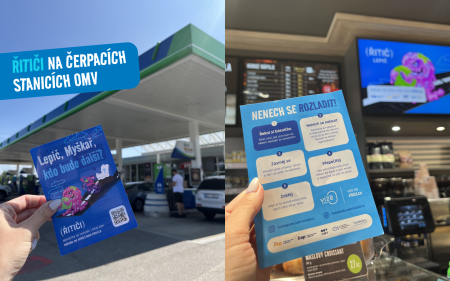
Friday, June 14, 2024
Drivers encounter dangerous situations on the roads daily, arising from aggressive driving behavior. The project DriveArse (Czech: Nenechte se rozladit - Řitiči) indirectly built upon findings from the project Aggression Kills (Agresivita zabíjí by ČAP, BESIP) and systematically used them to create a positive solution in situations where a road user is confronted with aggression behind the wheel.
Previous research (Aggression Kills, ČAP, BESIP) indicate that aggressive driving causes up to 40% of fatal traffic accidents. Aggressive driving is dangerous not only for the drivers themselves but also for those around them. 7 out of 10 drivers admit that they are provoked into aggressive driving and change their own driving style. This is linked to the belief of 88% of Czech drivers in the increasing aggression behind the wheel. Almost 60% of drivers under 30 sometimes intentionally do not maintain a safe distance from the vehicle in front of them, and 20% of them purposely speed up when another car is trying to overtake them. At the same time, 87% of drivers are motivated by the considerate driving of others.
In the case of aggression behind the wheel, the current legislative support in the Czech Republic is rather general and does not contain precise definitions of aggressive behavior behind the wheel, its specific manifestations, or the exact penalties that may be imposed. The DriveArse campaign was therefore carried out together with the efforts of Platforma VIZE 0 for legislative changes, using experiences from selected EU countries where legislation defines what precisely aggression is and imposes specific sanctions.
This project comes up with a positive attitude and wit as a tool to deal with unpleasant situations on the road, while also functioning as a creative research. It presents manifestations of aggression through caricatures of aggressive drivers with creative names. In this way, it helps road users to recognise and name aggressive drivers, as well as not to be provoked by such aggressive drivers and to handle the situation with humour (for example with a rhyme or a funny remark).
Previous research (Aggression Kills, ČAP, BESIP) indicate that aggressive driving causes up to 40% of fatal traffic accidents. Aggressive driving is dangerous not only for the drivers themselves but also for those around them. 7 out of 10 drivers admit that they are provoked into aggressive driving and change their own driving style. This is linked to the belief of 88% of Czech drivers in the increasing aggression behind the wheel. Almost 60% of drivers under 30 sometimes intentionally do not maintain a safe distance from the vehicle in front of them, and 20% of them purposely speed up when another car is trying to overtake them. At the same time, 87% of drivers are motivated by the considerate driving of others.
In the case of aggression behind the wheel, the current legislative support in the Czech Republic is rather general and does not contain precise definitions of aggressive behavior behind the wheel, its specific manifestations, or the exact penalties that may be imposed. The DriveArse campaign was therefore carried out together with the efforts of Platforma VIZE 0 for legislative changes, using experiences from selected EU countries where legislation defines what precisely aggression is and imposes specific sanctions.
This project comes up with a positive attitude and wit as a tool to deal with unpleasant situations on the road, while also functioning as a creative research. It presents manifestations of aggression through caricatures of aggressive drivers with creative names. In this way, it helps road users to recognise and name aggressive drivers, as well as not to be provoked by such aggressive drivers and to handle the situation with humour (for example with a rhyme or a funny remark).
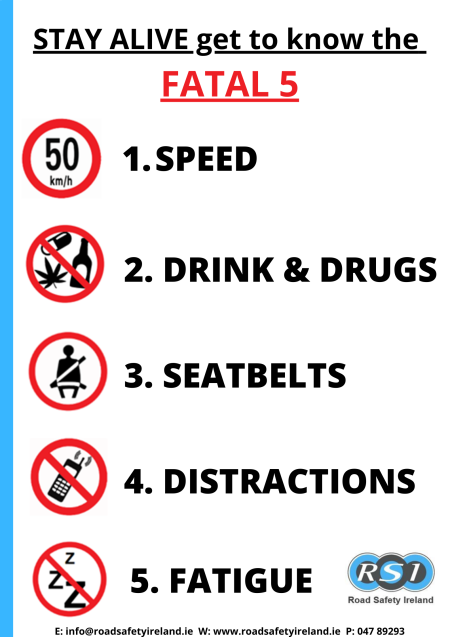
Friday, June 14, 2024
We are focusing on the most common causation factors of accidents/collsions on roads.
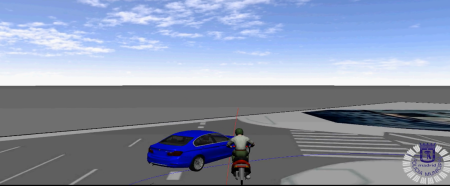
Friday, June 14, 2024
El desafío es implementar una iniciativa que permite mejorar y poner en práctica acciones que reduzcan los enclaves de concentración de accidentes, recogiendo el propósito de “Avanzar juntos hacia una movilidad segura”, compartiendo y comprometiéndonos a conseguir unos objetivos, desarrollando unas actividades que permite abordar con éxito el problema de la seguridad vial urbana en la Ciudad de Madrid, la segunda Ciudad Europea con mayor población.

Friday, June 14, 2024
Since 2017, the Croatian Automobile Club (HAK) has been implementing the educational and preventive program "KLIK - seat belt, a habit of responsible behavior" as part of the National Road Safety Plan of the Republic of Croatia, whose target group is senior high school students. The word “KLIK” is an acronym for “how to easily avoid a disaster” (in Croatian Kako Lako Izbjeći Katastrofu) and its pronunciation imitates the sound of buckling up.
Statistical data show that young people between the ages of 15 and 24 are one of the most vulnerable groups of road users in Croatia. In the Croatian National Road Safety Plan 2021-2030 it is visible that 28% of drivers who do not use seat belts are young drivers. This data significantly indicates the need for education of young people, which is done in the “KLIK” program.
We point out that in the Republic of Croatia, unlike the larger number of preschool and school children, the high school population has not yet been systematically covered by any projects within school curriculums in the field of road safety. This road safety program focuses on educating young people in order to achieve the Vision Zero, meaning our ultimate objective is to completely eliminate traffic fatalities and sever injuries on Croatian roads by 2050. It has been integrated into school curriculums, just like our other successful initiatives for elementary school students: “See and Click”, “Safe to School with HAK” and “Safe in Traffic”.
It is known that adolescents, in search of their identity and independence, are often inclined to disagree with adults and adopted rules of behavior under the pretext that their freedom is restricted. This life phase is characterized by the consolidation of knowledge and skills, the crystallization of attitudes and opinions and particularly rational mental maturation. The profile just described is one of the key reasons for risky behavior in traffic. The consequences are reflected in traffic accident statistics, where young people between the ages of 15 and 24 are one of the most vulnerable groups of road users. HAK conducts driving exams and the “KLIK” program is a perfect opportunity to reach young adults because of the need to address their values and behaviors prior to attending driving schools.
Statistical data show that young people between the ages of 15 and 24 are one of the most vulnerable groups of road users in Croatia. In the Croatian National Road Safety Plan 2021-2030 it is visible that 28% of drivers who do not use seat belts are young drivers. This data significantly indicates the need for education of young people, which is done in the “KLIK” program.
We point out that in the Republic of Croatia, unlike the larger number of preschool and school children, the high school population has not yet been systematically covered by any projects within school curriculums in the field of road safety. This road safety program focuses on educating young people in order to achieve the Vision Zero, meaning our ultimate objective is to completely eliminate traffic fatalities and sever injuries on Croatian roads by 2050. It has been integrated into school curriculums, just like our other successful initiatives for elementary school students: “See and Click”, “Safe to School with HAK” and “Safe in Traffic”.
It is known that adolescents, in search of their identity and independence, are often inclined to disagree with adults and adopted rules of behavior under the pretext that their freedom is restricted. This life phase is characterized by the consolidation of knowledge and skills, the crystallization of attitudes and opinions and particularly rational mental maturation. The profile just described is one of the key reasons for risky behavior in traffic. The consequences are reflected in traffic accident statistics, where young people between the ages of 15 and 24 are one of the most vulnerable groups of road users. HAK conducts driving exams and the “KLIK” program is a perfect opportunity to reach young adults because of the need to address their values and behaviors prior to attending driving schools.

Friday, June 14, 2024
"It is mathematically impossible to drive with the idea of maintaining a safe distance and not causing traffic jams". We need to shift to the paradigm of "maintaining inertia," not distance. And how do we teach this? With a video game! (traffic simulator) In smartphone, in Tablet, in Laptop, in PC...
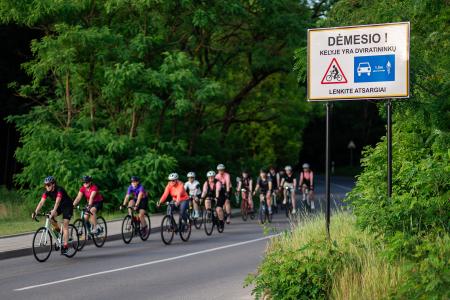
Thursday, June 13, 2024
Since our inception in 2017, we have identified major road safety challenges faced by cyclists, primarily related to unsafe overtaking practices. This is a crucial problem, with the number of cyclists steadily increasing each year and many people, particularly in remote areas, relying on cycling for their daily activities. In 2023 alone, eleven cyclists tragically lost their lives in road accidents in Lithuania, an increase from five deaths the year before. In response to these alarming trends, we launched a public campaign targeting both the general public and public authorities. The aim of this campaign is to approve and implement a new road sign that mandates vehicles maintain a safe overtaking distance of at least 1.5 meters from cyclists. This sign, commonly used in many other countries, would be a first for Lithuania.
In collaboration with local authorities, we successfully erected eight such signs in various locations across Lithuania in 2023-2024, largely using our charity funds for this purpose. Our ongoing efforts are now focused on achieving nationwide adoption of this sign, particularly in areas identified as high-risk for cyclists. By doing so, we aim to significantly enhance road safety for cyclists throughout the country.
In collaboration with local authorities, we successfully erected eight such signs in various locations across Lithuania in 2023-2024, largely using our charity funds for this purpose. Our ongoing efforts are now focused on achieving nationwide adoption of this sign, particularly in areas identified as high-risk for cyclists. By doing so, we aim to significantly enhance road safety for cyclists throughout the country.

Thursday, June 13, 2024
The number of motorcyclists in Lithuania is growing every year. According to the data of 2023, there were ~88,000 motorcycles and mopeds registered in Lithuania. New drivers only receive 10 academic hours of practical driving lessons in schools before they get an A category (motorcycle driving license). In our opinion, this is too little to learn how to ride a motorcycle safely. We emphasize continuous informing of the motorcycling public about safe participation in public traffic. We organize public rides during the season in with 40 to 100 riders are participating. We teach how to properly and safely ride in a motorcycle convoy, what signs to use, how to brake, maintain a constant speed and maintain safe distances between moving motorcycles. These rides are organized free of charge. We also host shows and podcasts on a variety of topics relevant to motorcyclists, including road safety and information for new young motorcycle drivers. A video about the first medical aid to a victim in a moto accident was filmed last year. The plan is to prepare more video material about safe driving, safe motorcycle gear, how to maintain a motorcycle etc.